’22 Mercedes EQB EV Lures Mainstream Buyers with Aggressive Pricing
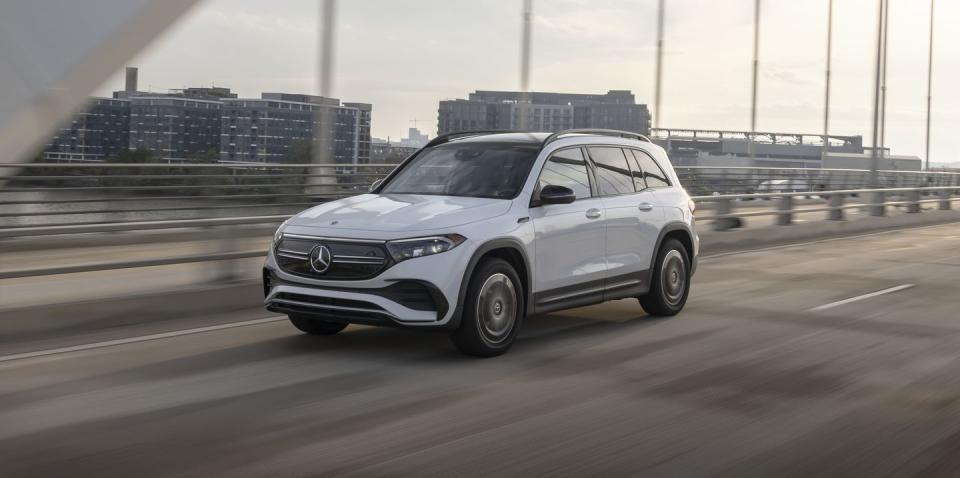
The EQB is derived from the gasoline-powered Mercedes GLB midsize crossover, which needs all the sales help it can get in this fiercely competitive US segment.
One version of the EQB will offer 225 hp and the other 288 hp. Maximum speed for both models is 99 mph—they’re not designed to keep AMG pace on the autobahn.
With a 70.5-kWh battery, range for the EQB is estimated at 230 miles—well below more expensive rival models carrying heavier battery packs of at least 100 kWh.
Those currently shopping for a luxury battery-electric crossover have limited choices, including the Audi e-tron, BMW iX, Cadillac Lyriq, Jaguar i-Pace, Tesla Model X, and Volvo XC40 Recharge. But new offerings are on the way, such as the Lexus RZ and electric versions of the Porsche Macan and Range Rover.
The latest entry, arriving this summer in the US, is the all-electric Mercedes-Benz EQB, which is derived from the gasoline-powered GLB midsize luxury crossover. Spinning off an all-electric version makes good sense because the GLB needs all the help it can get in this fiercely competitive US segment, where its 11,500 deliveries through the first half of this year makes it a laggard.
The EQB's seemingly creaseless exterior may lack style—are there any great-looking crossovers, luxury or otherwise?—but the interior is well-appointed and comfortable and the drivetrain is smooth and capable with 225 hp and 288 lb-ft of torque in the EQB 300 4Matic we drove in southern Germany. Mercedes reports a 0-62 mph time of 8.0 seconds, which makes it slower than most of its rivals.
Thrill-seeking customers might steer instead toward a second version, the EQB 350 4Matic, which steps up to 288 hp and 384 lb-ft of torque, although through a fixed-ratio transmission. Both EQBs have a motor at each axle (but front-wheel biased) and use the same 420-volt architecture and offer a usable energy content of 70.5 kWh from the lithium-ion battery pack. Maximum speed in both EQBs is 99 mph—they’re not designed to keep AMG pace on the autobahn.
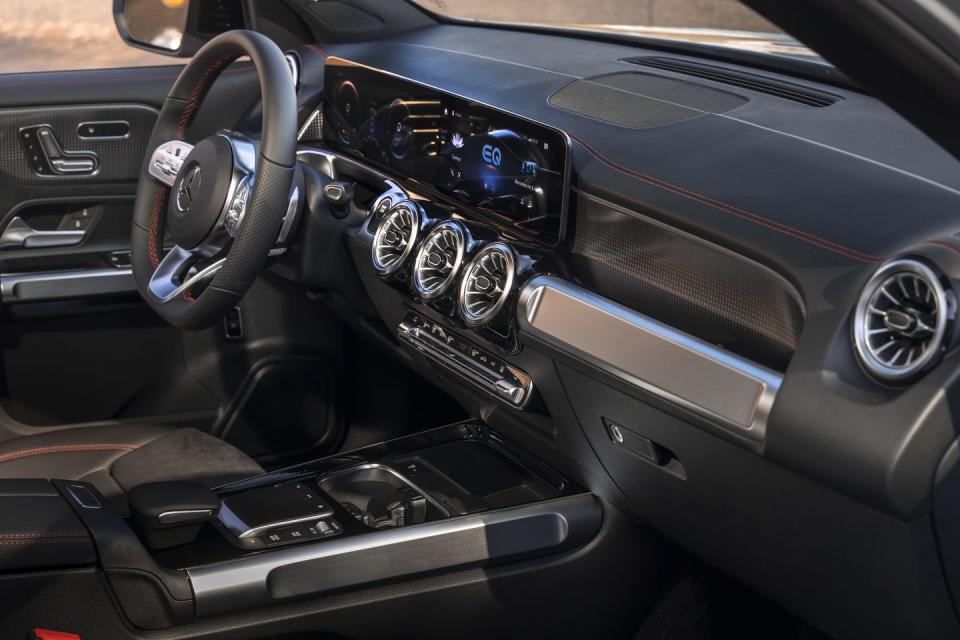
What matters to most EV shoppers is range, and the EQB’s anticipated 230 miles on a single charge (although not yet certified by the EPA) places it in good company. Some rivals top 300 miles of range, but with larger batteries of at least 100 kWh—including the BMW iX, Cadillac Lyriq, and Tesla Model X, all of which are well over 5000 pounds.
But you can save money buying an EQB with a smaller battery that reduces weight and still can handle a drive from Boston to Manhattan without recharging. Heavier curb weight makes for inefficiency—it means your EV will work harder to move that mass, depleting range. Another rival, the Audi e-tron 50 quattro, has a similarly sized 71-kWh battery, but it tips the scales at more than 5200 pounds while delivering up to 211 miles of range. That’s well below the EQB, which weighs in at a relatively slender 4718 pounds, with a full tank of gas.

As EV segments fill up in the coming years, we will see more of this strategic positioning as automakers seek the white space and try to create niches based on range, size, performance, price, and the user experience. But success is not assured. Mercedes has tried to market in Germany the EQC, an electric version of its GLC crossover. But the EQC has not done well and will be discontinued in spring. The EQB is meant to succeed where the EQC failed.
The EQC is not available in the US, but sales for its combustion-engine GLC counterpart surpassed 36000 units in the first half this year and the even larger GLE topped 32000.
EVs are having an impact in this segment that includes the Tesla Model Y (with 98,294 first-half sales), Ford Mustang Mach-E (17,675 sales), and Hyundai Ioniq 5 (13,692 sales). Based on a test drive of Mercedes’ newest production EV, chances are good the EQB will be warmly welcomed to the market.

On the pricing front, the EQB 300 4Matic will start at $55,550 while the upmarket EQB 350 4Matic will begin at $59,100, including destination charges. That’s aggressively priced against the $122,440 Tesla Model X, $84,100 BMW iX, and $62,990 Cadillac Lyriq.
But there are two competitive models—both with lower prices and larger battery packs—that we haven’t mentioned yet, and these line up more directly with the EQB. The $53,550 Volvo XC40 Recharge has a 78-kWh battery that delivers 223 miles of range, while the $49,900 Audi Q4 e-tron has an 82-kWh battery pack with 241 miles of range. The Volvo is the quickest of these three, with 402 hp, good for a 0-62-mph sprint in 4.9 seconds.
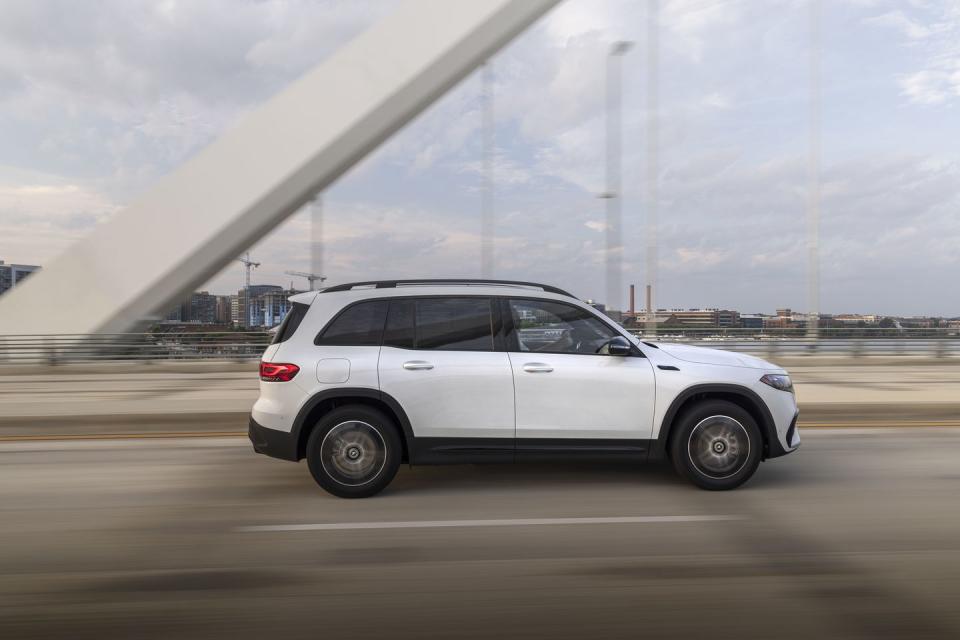
Either way, the EQB shows Mercedes-Benz pricing its EVs to attract mainstream shoppers—like it has done with some of its combustion-engine models.
The EQB interior is inviting—moreso than the exterior—carrying over the styling, materials, functionality, layout, and infotainment seen across the Mercedes-Benz lineup. Black leather seats are standard for the US market, but the main seating material in other markets will be a hearty fabric made from recycled pop bottles.
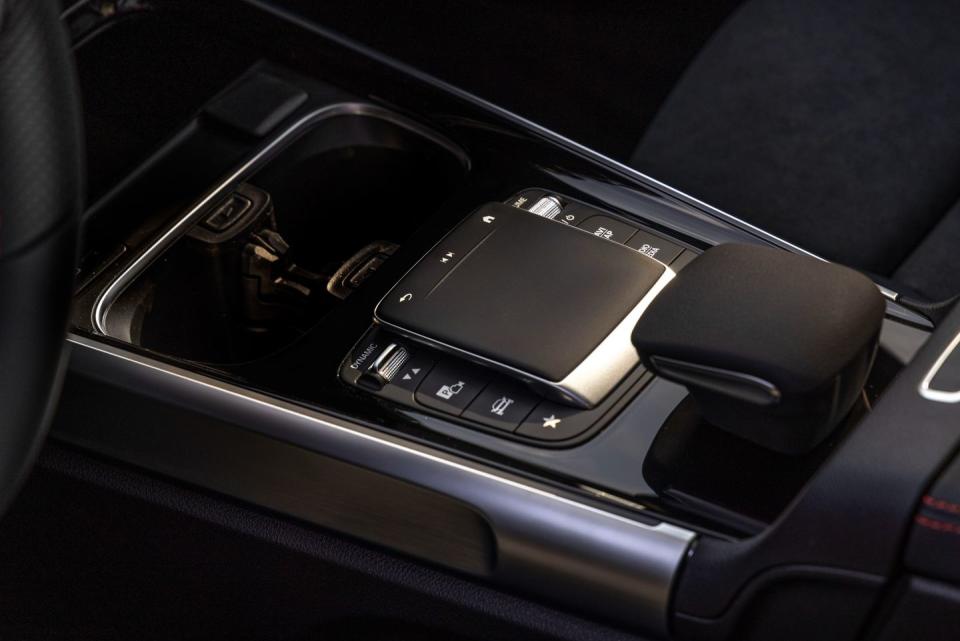
For its size, the EQB will accommodate four occupants comfortably, although a fifth seating position in the middle of the second row will be tight. Oddly enough, the EQB, with its 111.3-inch wheelbase, will be available in the US with a third row, which will be excruciatingly snug for anyone under 5-foot-6.
The standard navigation system calculates the fastest route to a destination, taking into account maximum charging power, and it will even try to estimate the duration of charging stops. With a Level II AC charger, the EQB can go from 10% to 100% state of charge in less than six hours. While DC fast charging, Mercedes says the EQB can stretch from 10% to 80% replenished in 32 minutes.
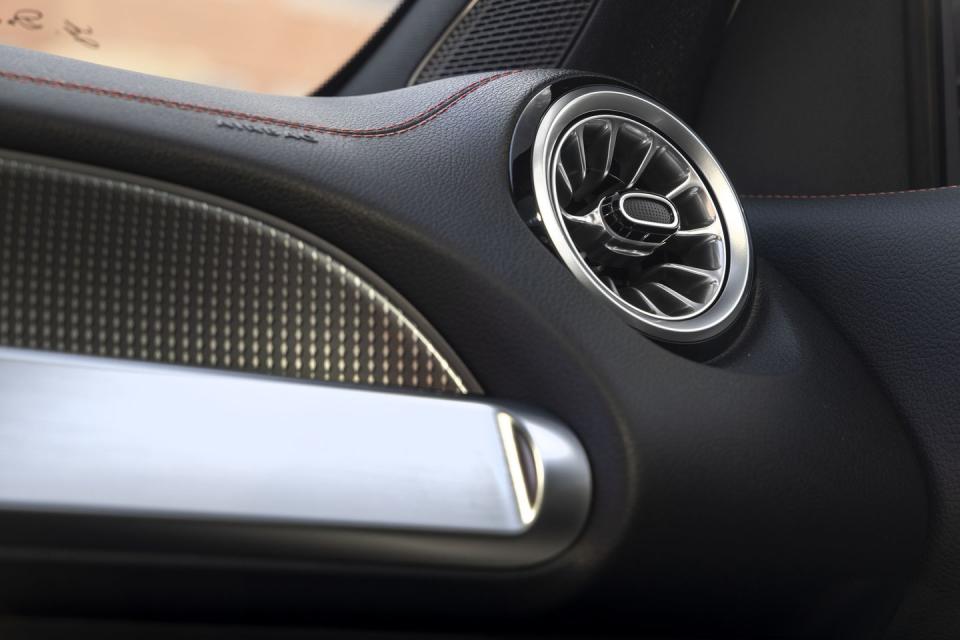
Using the Mercedes me Charge app, customers can access nearly 60,000 public places to juice up in the US. EQB customers using the app will get two years of free charging (an unlimited number of 30-minute sessions) through the Electrify America network, which includes more than 2600 ultra-fast DC chargers nationwide.
Mercedes-Benz has big hopes for the EQB, its first all-electric crossover and its second EV in the market, behind the flagship EQS sedan, which launched late last year in the US as part of Mercedes’ EVA2 platform. That architecture also underpins the coming EQS SUV and EQE sedan and SUV.
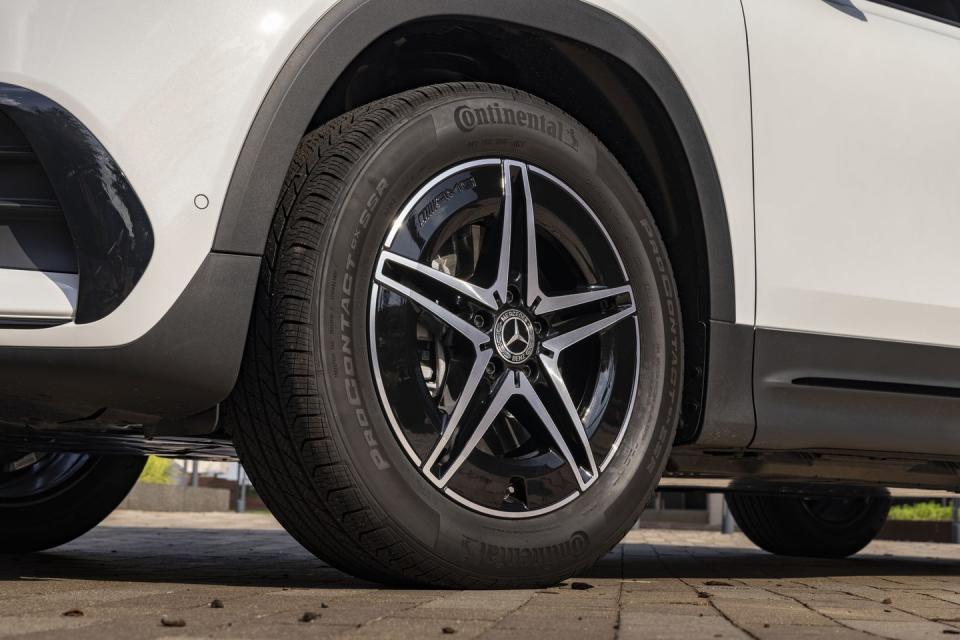
The EQB targets a less-affluent audience, springing from the EVA1.5 architecture that’s also used for the smaller EQA EV not sold in the US. In a few years, EVs like the EQB and EQA will be consolidated within the new Mercedes Modular Architecture (MMA), intended for luxury compacts.
US deliveries begin in three weeks for the EQB, which will be the first all-electric production vehicle from Mercedes’ plant in Kecskemét, Hungary. Mercedes’ plant in Beijing also will produce the EQB, for the Chinese market.
As a shopper, are you attracted to a low-priced Mercedes all-electric CUV? Please comment below.

 Yahoo Autos
Yahoo Autos 